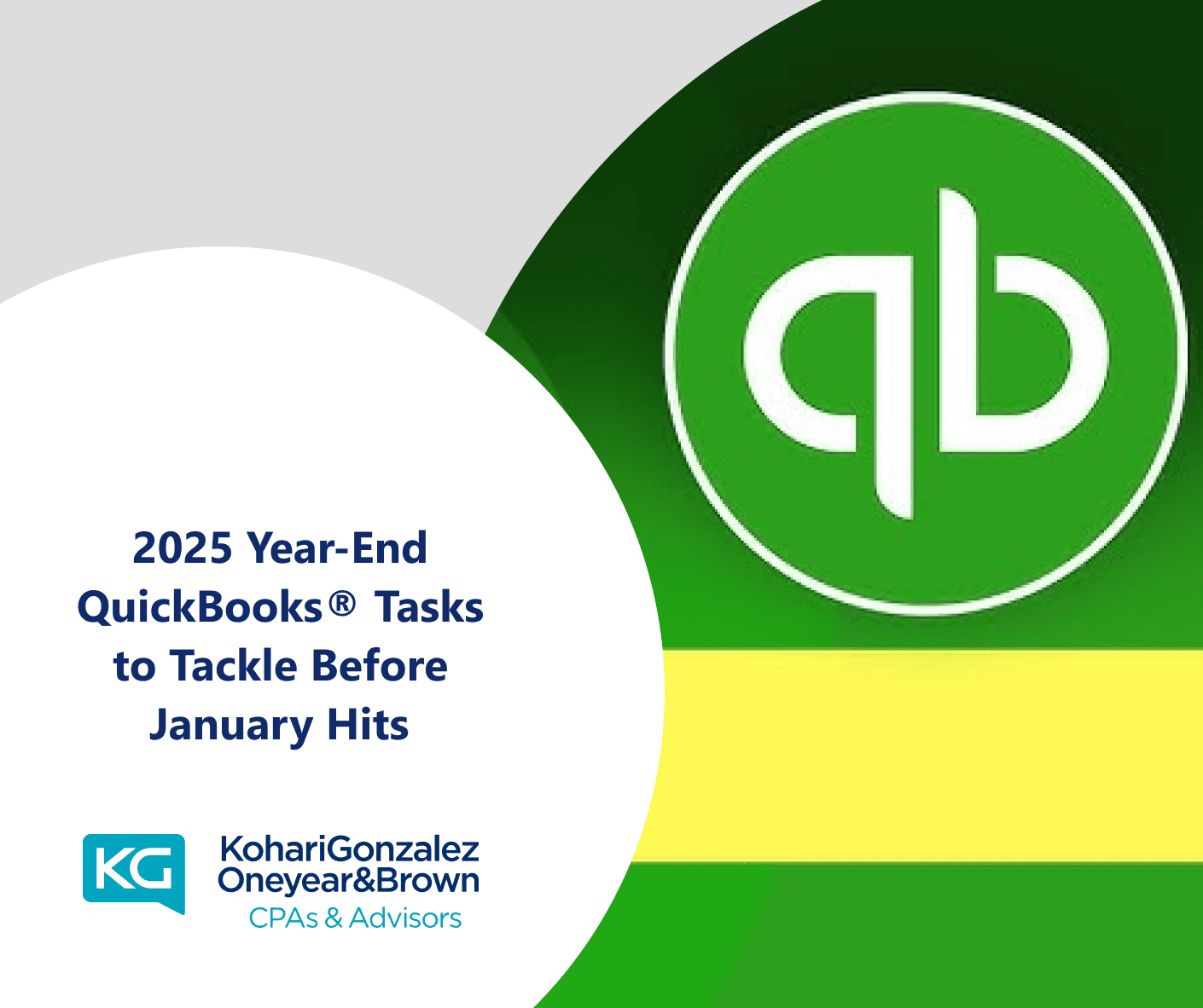
As the leaves change and we all start looking ahead to 2026, small companies and accountants understand that properly closing the accounts on one year sets the tone for the next. With changing tax standards and new QuickBooks® Online (QBO) features being released, here are critical chores to complete before December 31 to optimize your 2025 tax season.
1. Reconcile all bank and credit card accounts.Don't leave any loose ends. In Settings > Chart of Accounts > Reconcile, compare each account to its statement, confirm ending balances, and handle transactions in the Undeposited Funds or Uncategorized buckets. QBO's tools now highlight unreconciled items to avoid surprises later.
2. Check customer and vendor balances.Run aging reports for accounts receivable and accounts payable. Send statements to customers with unpaid invoices. If bills are past due or uncollectible, consider writing them off (with correct accounting judgment). Also, check vendor balances for any missing entries.
3. Finalize year-end reports.Create and examine your Profit and Loss, Balance Sheet, and Trial Balance reports using a full-year date range. Look for anomalies, such as negative balances or unusually large entries. Use filters by class or area to identify unusual differences.
4. Handle 1099s and contractor tracking Ensure that all contractors are appropriately identified as 1099-NEC or 1099-MISC. In QBO, navigate to Expenses → Vendors → Prepare 1099s to confirm addresses, W-9s, and payments. Missing data now can cause IRS issues in January.
5. Make Final Adjustments and Close the Books.This comprises depreciation, amortization, bad debt adjustments, owner drawdowns, and retained earnings transfers. Confirm fiscal year settings under Settings → Advanced to ensure QBO knows which period is ending. To avoid unintentional modifications, "close your books" after making any necessary revisions.
6. Update the payroll and employee records. Especially critical if you're using QuickBooks® Online Payroll. Before the year's end:
- Process year-end payroll with bonuses and commissions.
- Ensure all benefits, fringe payments, and retirement contributions are accurately reported.
- Review and update employee information, including residences, SSNs, and W-4 updates.
- Review and update W-2 forms before filing.
7. Utilize New QuickBooks® Features and Automations.QuickBooks® improved automation, classification rules, and the interface in 2025. If you haven't already opted into these features, now is the time—especially for businesses that use QuickBooks® Online Accountant to manage several clients.
Bonus Tip:
To identify expected gaps, use QBO's cash-flow projection tools or do a "budget vs. actual" analysis. If 2025 has unanticipated spending or decreased revenue, consider setting up reserves or making early adjustments to estimated tax payments.
Don't rush through the end of the year. By balancing accounts, verifying balances, filing tax forms, updating payroll, and utilizing QuickBooks®'s latest capabilities, you can set your company for a smoother 2026. A little diligence now pays off later.



